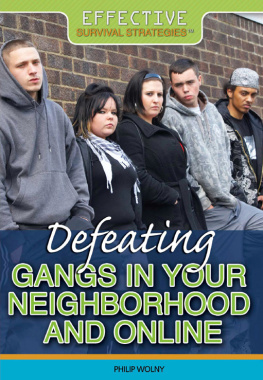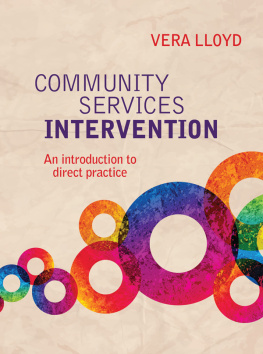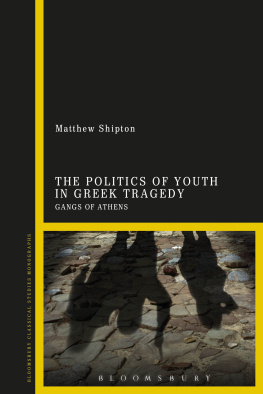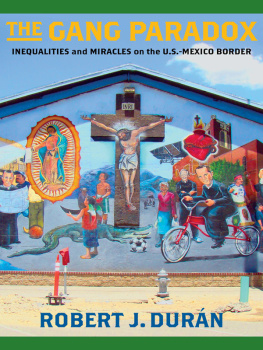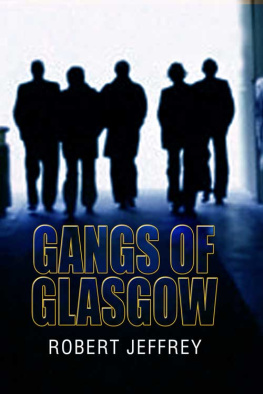YOUTH GANGS AND COMMUNITY INTERVENTION |
Research, Practice, and Evidence |
EDITED BY |
ROBERT J. CHASKIN |
Columbia University Press New York |
Publishers Since 1893
New York Chichester, West Sussex
cup.columbia.edu
Copyright 2010 Columbia University Press
All rights reserved
E-ISBN 978-0-231-51931-1
Library of Congress Cataloging-in-Publication Data
Youth gangs and community intervention : research, practice, and evidence / edited by Robert J. Chaskin.
p. cm.
Includes bibliographical references and index.
ISBN 978-0-231-14684-5 (cloth : alk. paper)
ISBN 978-0-231-14685-2 (pbk. : alk. paper)
ISBN 978-0-231-51931-1 (ebook)
1. Gang preventionUnited StatesCitizen participation. 2. GangsUnited States. 3. Gang membersRehabilitationUnited States. 4. Community organizationUnited States. I. Chaskin, Robert J. II. Title.
HV6439.U5Y68 2010
364.1'0660973dc22 2009040101M
A Columbia University Press E-book.
CUP would be pleased to hear about your reading experience with this e-book at .
References to Internet Web sites (URLs) were accurate at the time of writing. Neither the author nor Columbia University Press is responsible for URLs that may have expired or changed since the manuscript was prepared.
Contents
1. The Chicago School: A Context for Youth Intervention Research and Development
Robert J. Chaskin
2. The Evolution of Gang Policy: Balancing Intervention and Suppression
George E. Tita and Andrew Papachristos
3. Lessons Learned from Gang Program Evaluations: Prevention, Intervention, Suppression, and Comprehensive Community Approaches
James C. Howell
4. An Examination of the Role of CeaseFire, the Chicago Police, Project Safe Neighborhoods, and Displacement in the Reduction in Homicide in Chicago in 2004
Charlie Ransford, Candice Kane, Tim Metzger, Elena Quintana, and Gary Slutkin
5. From Knowledge to Response and Back Again: Theory and Evaluation in Responding to Gangs
G. David Curry
6. Promoting Research Integrity in Community-Based Intervention Research
James F. Short, Jr. and Lorine A. Hughes
7. Multiple Marginality and Human Development: Applying Research Insights for Gang Prevention and Intervention
James Diego Vigil
8. A Community Youth Development Approach to Gang Control Programs
Jeffrey A. Butts and Caterina Gouvis Roman
9. Taking Criminology Seriously: Narratives, Norms, Networks, and Common Ground
David M. Kennedy
10. Community Gang Programs: Theory, Models, and Effectiveness
Irving A. Spergel
This book brings together papers on the theory behind, evidence for, and nature of community approaches to addressing the youth gang problem. The papers were written in honor of Irving A. Spergel, who spent a long and productive career developing scholarship and testing intervention approaches to address this problem. Spergel is a well-known gang and community intervention scholar who has had significant influence on the field during his long tenure. Having worked with gang youth while at the New York City Youth Board and having studied with Richard Cloward and Lloyd Ohlin at Columbia University in the 1950s, Spergel came to the University of Chicago in 1960 to join the faculty of the School of Social Service Administration. He was named the George Herbert Jones Professor in 1993, and in addition to an influential body of published scholarship, he is the principal architect of a comprehensive community-based model that has been adopted by the Office of Juvenile Justice and Delinquency Prevention as the Comprehensive Community-Wide Approach to Gang Prevention, Intervention, and Suppression. Over the course of his career, Spergel has played many rolesyouth worker, scholar, teacher, program designer, evaluator, mediator, activist. He embodies a particular orientation to scholarship in the world, and a particular drive to build knowledge that has a real and practical effect on critical social problems of the day.
The book is based on papers delivered at a Festschrift held at the University of Chicago in honor of Irving A. Spergel upon his retirement. The Festschrift itself was an effort to generate dialogue (in the spirit of Spergels scholarship and engagement in the field) among a broad range of people involved in various ways with youth gangs, gang intervention, and community practice. The event provided an opportunity to raise, consider, and debate some of the key issues and important (and underexamined) points of contention among people oriented toward the problem from significantly different perspectives, including the police, city government, community leaders, faith-based institutions, schools, community youth workers, researchers, and, to some extent, youth themselves.
Many of the papers are based on presentations given at the Festschrift; others were written after this event to round out and enhance the coherence and completeness of the volume. Thanks go both to the contributing authors whose work is assembled here and to the other participants and organizers of the symposium and the production of this book, including James Burch, Roberto Caldero, Robert Fairbanks, Luis Gutierrez, Waldo Johnson, Malcolm Klein, Jeanne Marsh, Barbara McDonald, Charles Ramsey, Emilie Schrage, Bill Sites, Jamie Stanesa, Randolph Stone, Herman Warrior, Father Bruce Wellems, Celeste Wojtalewicz, Phelan Wyrick, Dan Zorich, and the many people who work with young people in communities in Chicago in a broad range of roles who participated actively in the discussions that the presentations generated, lending their perspective, wisdom, and understanding of challenges to the debate.
ROBERT J. CHASKIN
Gangs have a long history, with documentation dating from at least the Middle Ages in Europe and from colonial times in the United States (Haskins 1975; Hay et al. 1975; Pearson 1983). In the United States, youth gangs have burgeoned since the nineteenth century, along with the rapid urbanization and increase in immigrant populations in many American cities (Delaney 2006; Haskins 1975; Sanders 1970). They proliferated further, and evolved in different ways, during the latter half of the twentieth century, along with the increasing concentration of urban poverty shaped in part by migratory patterns, shifts in the structure of economic opportunity, and policies and practices (from redlining to the design and location of public housing) that fostered racial and economic segregation (Delaney 2006; Massey and Denton 1998; Wilson 1987). Over this time, our focus on gangsas a phenomenon in our communities, a subject of sociological investigation, a concern of law enforcement, and a social problem to be addressedhas grown and changed. Youth gangs in the United States are a frequent topic in the news, whether with respect to occasional, sensational themes (e.g., the advent of a gang war, the emergence of supergangs, the spread of gang activity to suburban and rural communities) or quotidian tragedy (e.g., another drive-by shooting). They are a fixture in the public imagination, shaping aspects of popular culture (for example, gangsta rap), and providing a theme for films (Boyz n the Hood) and video games (The Warriors). And they are an important focus of research, policy, and front-line intervention.
The gang as a topic of research emerged in the United States with the young discipline of sociology in the early part of the twentieth century, with the most notable early contribution being Frederick Thrashers systematic investigation of street gangs in the city of Chicago, first published in 1927. This was followed by a number of important ethnographic explorations of the social structure of poor urban neighborhoods (Whyte 1943) as well as systematic efforts to map and explain patterns of delinquency and gang involvement (Shaw and McKay 1942). Research on gangs continued to grow beyond this, exploding with particular force in the late 1950s and 1960s, on the heels of a set of competing theories on the sources of delinquency directly applicable to the problem, and followed shortly by a public policy interest in gang intervention (Klein 1995). Youth gangs have remained a vibrant area of investigation to the present day, and research on gangs has covered, among other issues, mapping the scope and nature of the gang problem, shifts in the conditions that contribute to gang formation and activities, the nuances of gang structure and functioning, the dynamics of gang proliferation and gang crime, the globalization and institutionalization of gangs, and the impacts of gangs on individuals and communities (Hagedorn 2007; Jankowski 1991; Klein 1995; Klein et al. 2001; Klein and Maxson 2006; Short and Hughes 2006).




